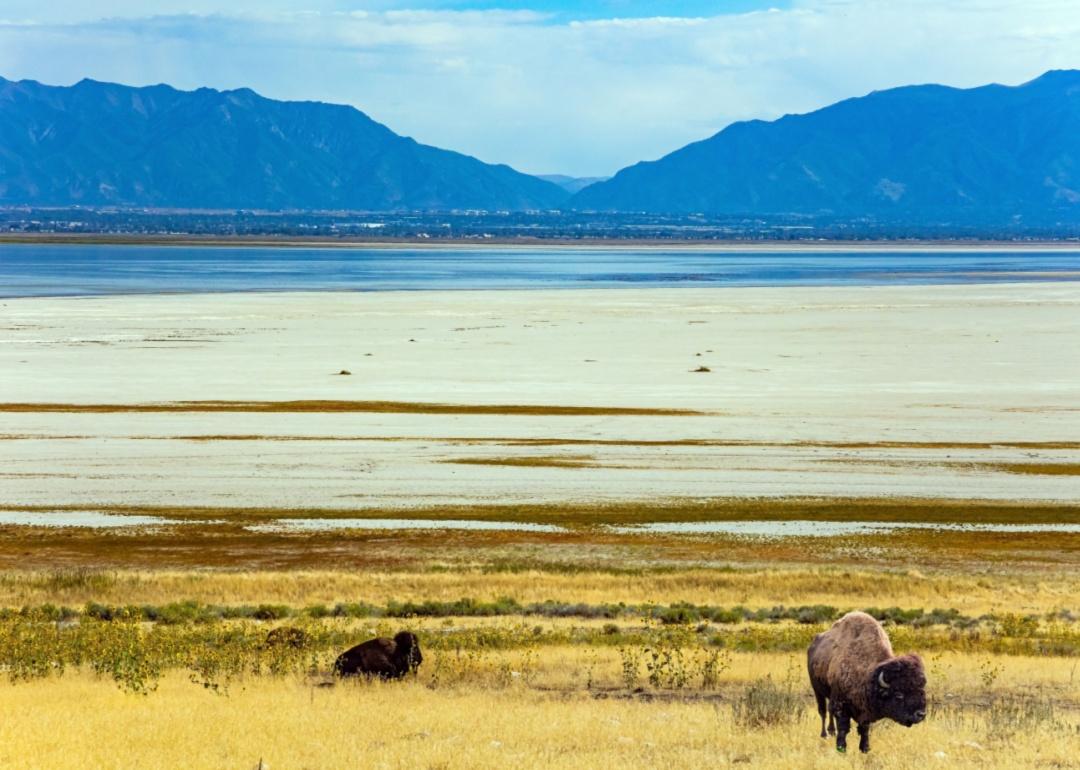
Why the largest lakes in the US are essential to the economy and environment
This story originally appeared on Boatzon and was produced and distributed in partnership with Stacker Studio.
Why the largest lakes in the US are essential to the economy and environment
With hundreds of thousands of lakes spread across the United States, most of us aren't too far from a body of water perfect for fishing, boating, or swimming. When it comes to the largest lakes in the country, visitors from all over the world flock to the shores of these natural and human-made wonders.
Covering thousands of square miles, the country's biggest lakes provide ample opportunities for recreation. More importantly, these lakes also serve as habitats for millions of species, among them rare birds, fish, and amphibians. Many even play essential roles in commerce. The Great Lakes, which comprise five of the country's largest lakes and the biggest freshwater system in the world, include shipping channels crucial to the U.S. and Canada.
The Great Lakes are far from the only sizable lakes in the country, though. To create this analysis of the 10 largest lakes in the U.S., Boatzon looked at the economic and environmental importance of these diverse bodies of water. Lake sizes and locations come from Census data. One of the lakes on the list, Lake Oahe, is a human-made reservoir.
With towering rock formations, intriguing history, and thriving wildlife, these lakes will impress every kind of visitor. Read on to find out which lakes are the largest in the country and learn about their even greater impacts.
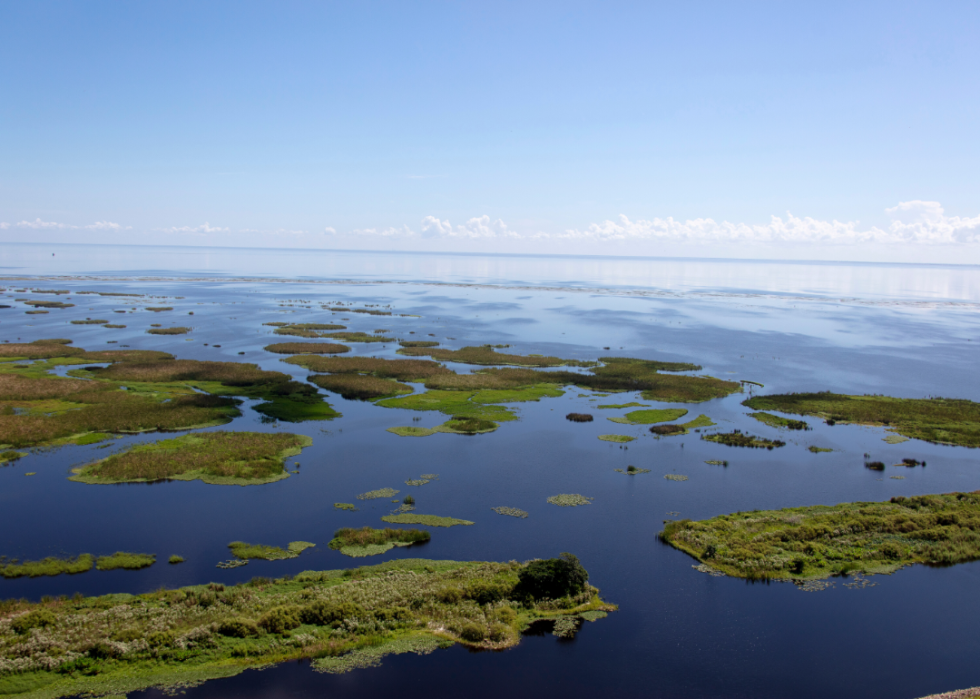
Lake Okeechobee
- Location: Florida
- Area: 662 square miles
The word Okeechobee translates to "big water" in the Seminole language, and this lake more than lives up to its name. The eighth-largest freshwater lake in the U.S., Okeechobee is part of the Greater Everglades watershed and is surrounded by wetlands, forming a vital habitat for fish, birds, and other native wildlife.
Despite existential threats such as agricultural and urban runoff, Okeechobee provides freshwater for much of South Florida, including dairy farms. Visitors come to fish for largemouth bass and black crappie, hunt ducks and alligators, and simply admire the area.
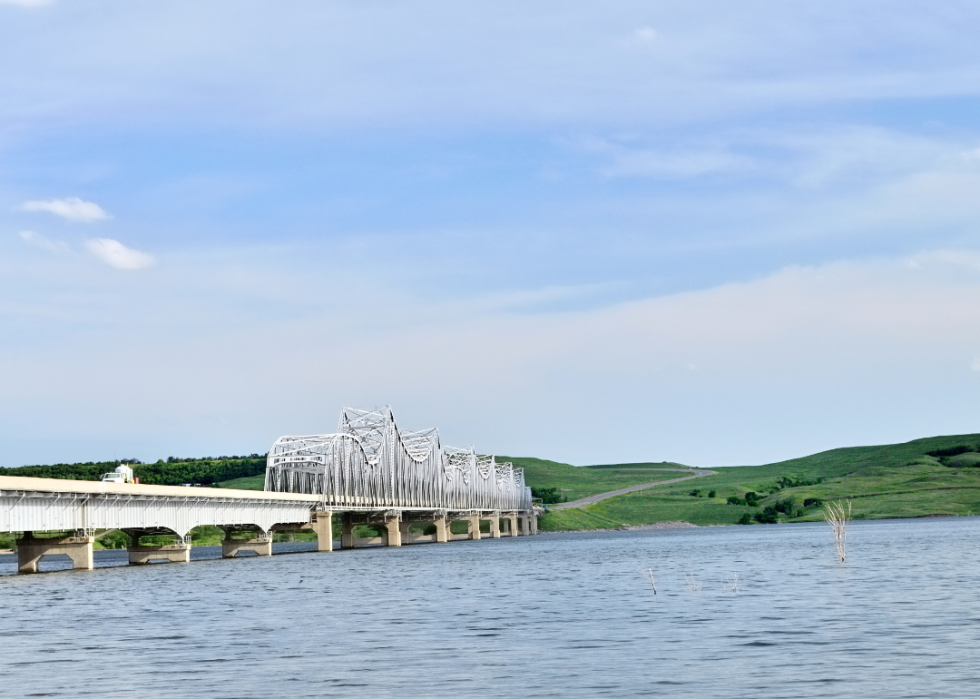
Lake Oahe
- Location: North Dakota, South Dakota
- Area: 685 square miles
Featuring more than 2,250 miles of shoreline, the filling of Lake Oahe started in 1958 and President John F. Kennedy dedicated it in 1962. The fourth-largest human-made reservoir in the country offers opportunities for camping, boating, hunting, and more. Oahe is also part of the Missouri River Fisheries Management Area, which can bring in more than $50 million per year.
Historical sites also abound at Lake Oahe. The region holds cultural significance for the Standing Rock Sioux Tribe, whom the U.S. government forcibly removed to build the lake. Also, the famed explorers Meriwether Lewis and William Clark passed nearby in 1804 while on their journey west.
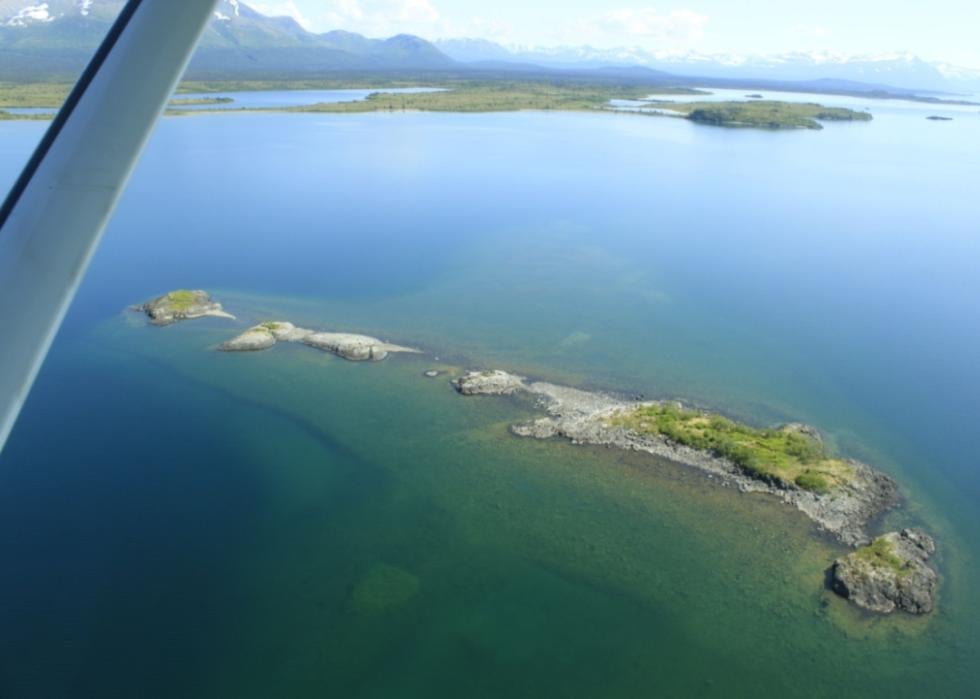
Iliamna Lake
- Location: Alaska
- Area: 1,014 square miles
Though some 3 million natural lakes exist in Alaska, Iliamna Lake stands out for its size and scenery. The largest lake in the state, Iliamna is home to the world's biggest sockeye salmon run, an economic powerhouse for Southwest Alaska.
Many people arrive on floatplanes to marvel at Iliamna's scenery or to fish the waters of the lake and Kvichak River. An Athabascan village of the same name on the northwest shore is home to a tight-knit community of Alaska Natives, highlighting the area's rich Indigenous cultural heritage.
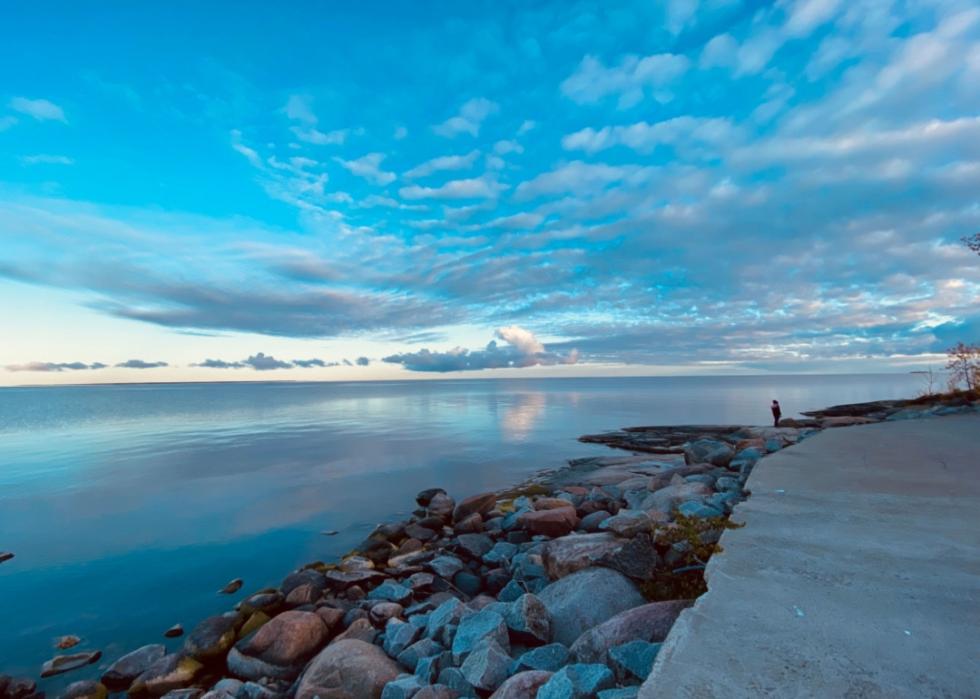
Lake of the Woods
- Location: Minnesota, Manitoba, Ontario
- Area: 1,485 square miles
Billed as the Walleye Capital of the World, Lake of the Woods sits on the U.S.-Canada border. French Canadians known as voyageurs plied their trade here until the mid-1800s, ferrying furs across the lake and turning the area into a transportation hub.
Today, Lake of the Woods is better known as a haven for both human and animal activity, with tourism contributing more than $107 million to the Lake of the Woods County economy every year. Besides walleye, species such as smallmouth bass and sturgeon also swim the waters. On land, grouse, deer, and black bears live around the lake's densely forested shores.
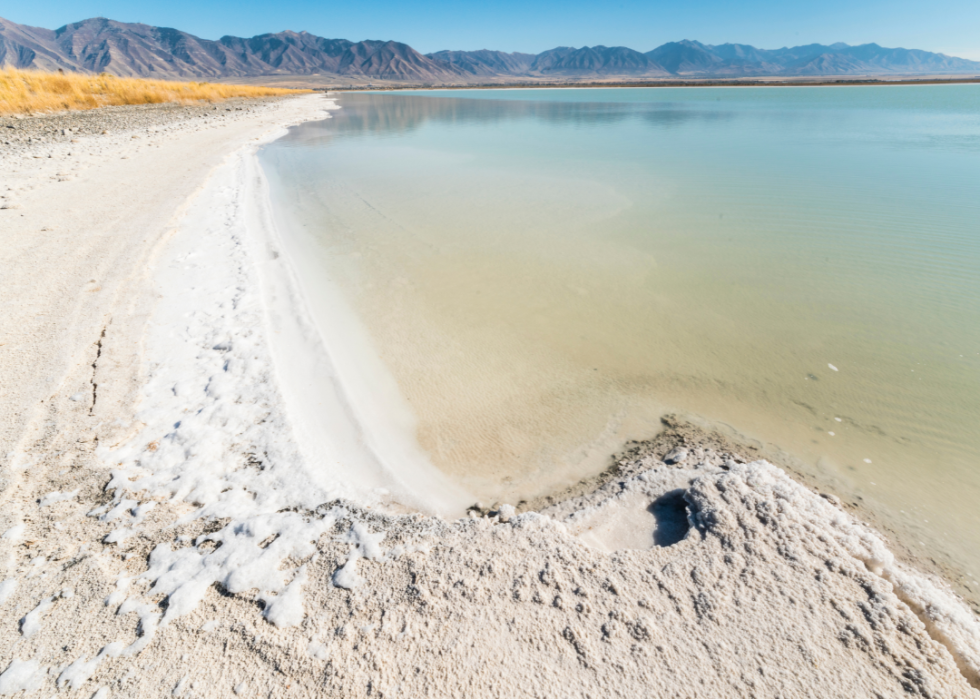
Great Salt Lake
- Location: Utah
- Area: 2,117 square miles
Most know the Great Salt Lake as the anchor of Utah's capital, Salt Lake City, but its fascinating ecology also garners attention. The largest natural lake west of the Mississippi River, the Great Salt Lake sustains a delicately balanced ecosystem of water fowl as well as brine shrimp and other invertebrates.
The mineral extraction and brine shrimp industries are vital economic contributors for the state, while adventurers come out to paddle, cycle, and hike around the centrally located Antelope Island. Drought and overuse have shrunk the Great Salt Lake, prompting many to wonder whether it could soon dry up altogether.

Lake Ontario
- Location: New York, Ontario
- Area: 7,340 square miles
Though the smallest of the Great Lakes by surface area, Lake Ontario holds an amazing 393 cubic miles of water. Those depths host a variety of native and nonnative aquatic life as well as birds.
Lake Ontario's waters also feature hundreds of shipwrecks—including the Bay State steamship, which sank during a massive storm in 1862. Shipping companies still utilize Ontario's waterways, and tourism and recreation also contribute to the surrounding economy. Visitors come to explore the nooks and crannies of the Thousand Islands region, composed of 1,864 islands between the U.S. and Canada.
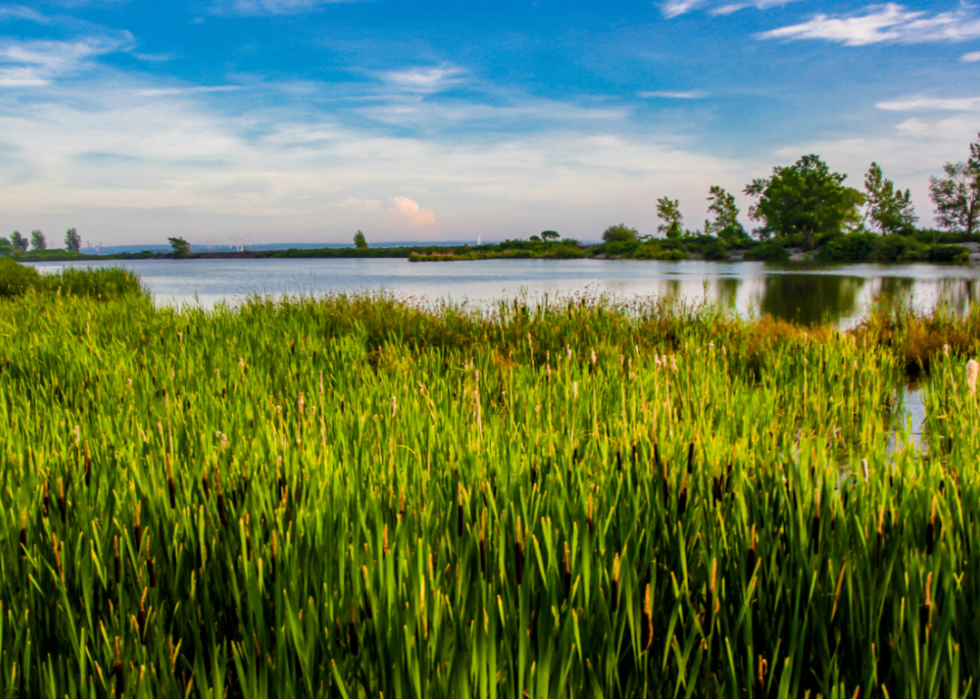
Lake Erie
- Location: Michigan, New York, Ohio, Pennsylvania, Ontario
- Area: 9,910 square miles
Lake Erie's name comes from the Iroquois word erielhonan, or long tail, referring to the lake's tail-like shape. The shallowest and warmest of the Great Lakes, Erie has backdropped countless chapters of history. A pivotal naval battle in the War of 1812 took place near the lake's north shore in 1813, and one of the Americans' worst military defeats ever is commemorated by River Raisin National Battlefield Park.
Erie is a pillar of Ohio's economy, providing more than 150,000 jobs in the shipping and commercial fishing industries. Its healthy population of walleye also draws anglers.
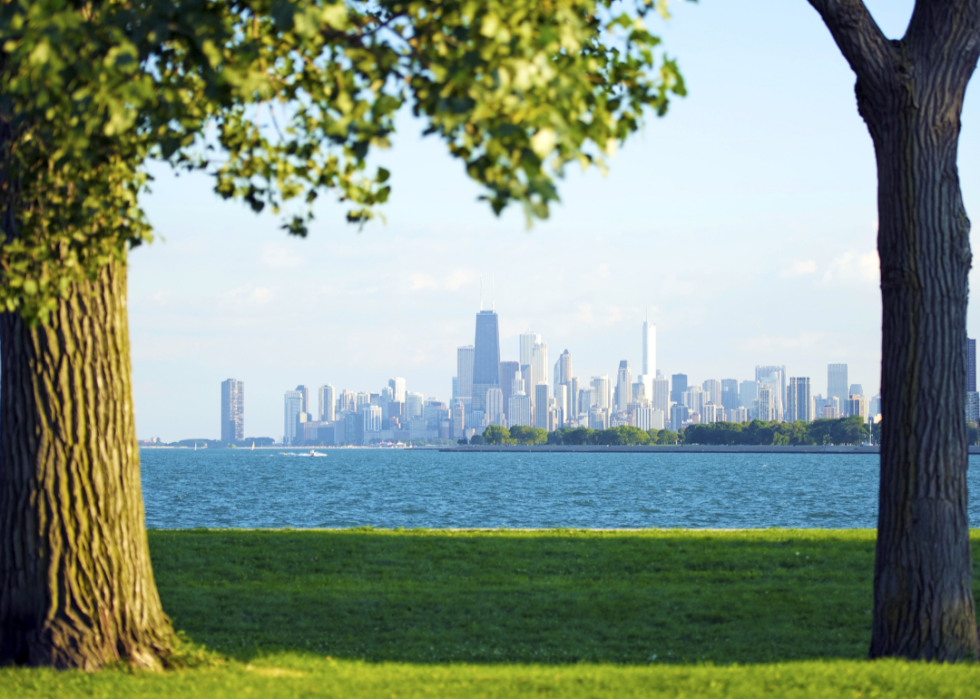
Lake Michigan
- Location: Illinois, Indiana, Michigan, Wisconsin
- Area: 22,300 square miles
Some of the Midwest's most populous cities, including Milwaukee and Chicago, sit on Lake Michigan's shores. This enormous lake also features incredible natural scenery, serving as a habitat for sandhill cranes, otters, and loons.
As for human activity, Indiana Dunes National Park is located south, while Sleeping Bear Dunes National Lakeshore entices visitors to the lake's northern end. Michigan is also home to the Great Lakes salmon fishery, making the lake a top destination for anglers. Recreation at the lake generates $3.2 billion per year in Illinois alone.
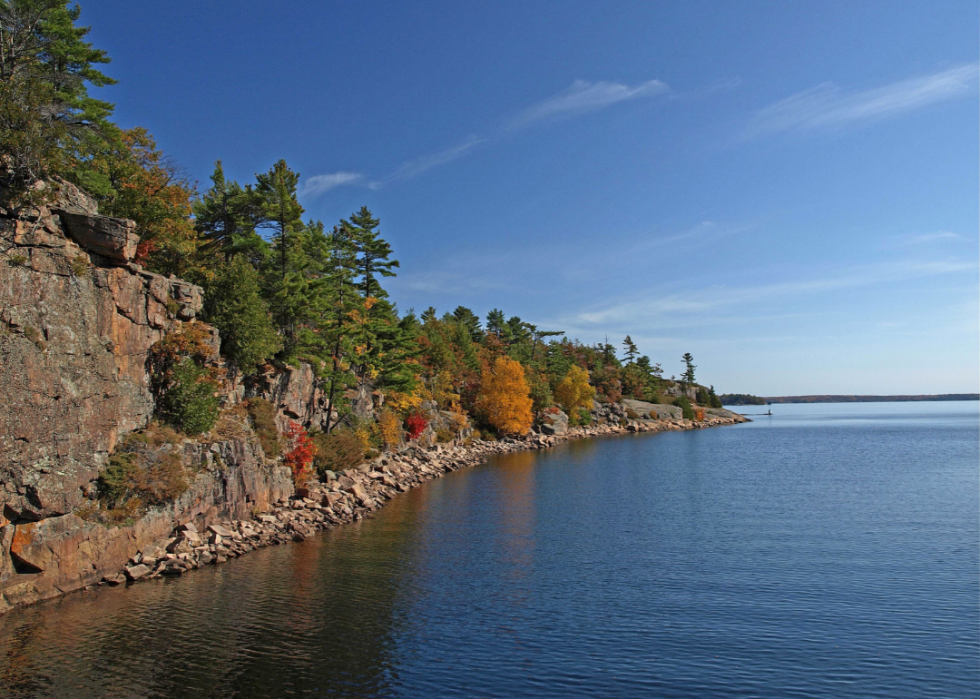
Lake Huron
- Location: Michigan, Ontario
- Area: 23,000 square miles
Lake Huron's stunning blue waters have earned the nickname La Mer Douce, or the freshwater sea. Like the other Great Lakes, Huron provides plentiful opportunities for outdoor recreation as well as untainted habitats for various species.
Though the lumber and fishing industries dominate Huron, the lake is best known for its scenic beauty and unique rock formations, including the pillars of Flowerpot Island. Within the waters, the Thunder Bay National Marine Sanctuary features almost 100 historic shipwrecks.
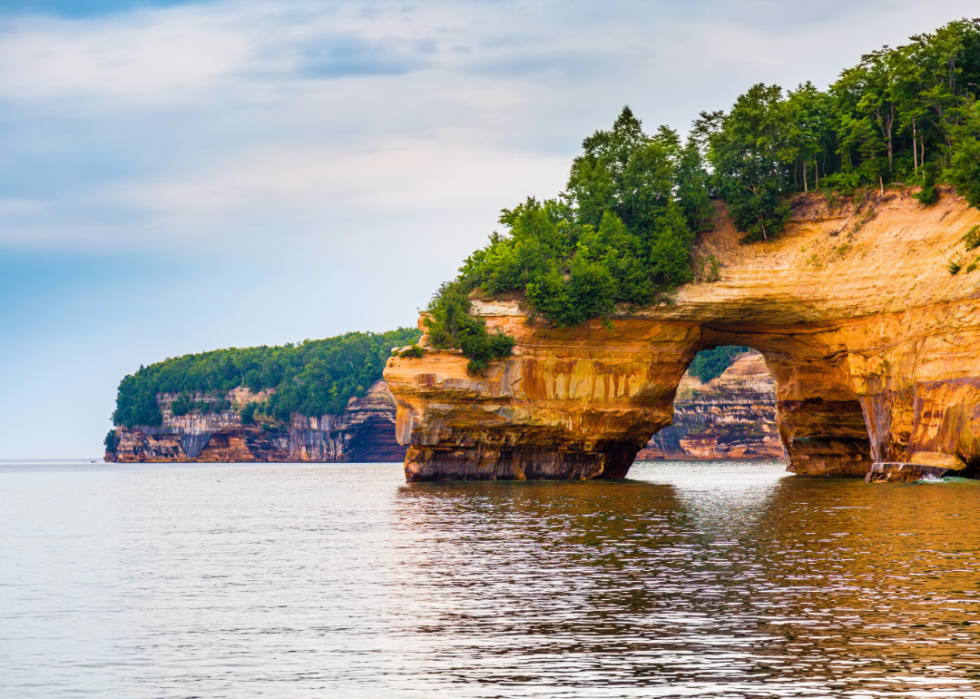
Lake Superior
- Location: Michigan, Minnesota, Wisconsin, Ontario
- Area: 31,700 square miles
The aptly named Lake Superior isn't just the largest freshwater lake in the U.S.—it's the largest freshwater lake anywhere in the world by surface area. Superior has been a major shipping hub since the 1700s, when the lake played a pivotal role in the fur trade, and its waters conceal more than 500 shipwrecks. Perhaps most famous among them is the SS Edmund Fitzgerald, immortalized by Canadian singer Gordon Lightfoot in a 1976 ballad.
Despite the famously stormy weather of "the big lake they call Gitche Gumee," Superior rarely freezes over completely and hosts visitors all year round, generating billions of dollars in tourism revenue. Shipping also pulls in billions of dollars to the region each year.
Data reporting by Nicole Caldwell. Story editing by Mike Taylor. Additional editing by Elisa Huang. Copy editing by Kristen Wegrzyn. Photo selection by Lacy Kerrick.



